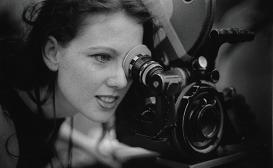Women in the Screen Industry: A woman's work is never done
 The Australian screen industry is full of talented and successful women, but this doesn’t mean gender imbalance is a thing of the past. Georgina Pearson writes.
The Australian screen industry is full of talented and successful women, but this doesn’t mean gender imbalance is a thing of the past. Georgina Pearson writes.
Gender equality is an age-old debate; one that’s been analysed and pulled apart countless times before. Yet as women in the Australian screen industry continue to deliver on a global stage we must dispute its relevance – is there a significant gender imbalance within the industry, or has this argument become a moot point, questioned merely as a matter of principle?
When the list of films eligible for the Australian Film Institute Awards was announced last year, AFI CEO Damian Trewhella pointed out that eight out of the 19 titles were directed by women, arguing that “in an international industry where women are still significantly under-represented, Australia is heading in the right direction.”
And the Australian Subscription Television and Radio Association (ASTRA) followed closely– declaring that the subscription TV sector has reached near gender equality amongst its 4,643 strong employees.
When Encore asked a number of industry bodies whether they knew the exact percentage of women working in their respective sectors, the answer was negative. It seemed that different sources had different statistics and opinions about the situation of women in the screen industry, yet for almost two decades no definitive research had been conducted in the area – not until associate professor of cinema studies at RMIT University Lisa French decided something needed to be done to address the information gap.
French is currently undertaking a study researching women in the screen industry – the first since the AFC/National Working Party report Portrayal of Women in the Media, in 1992. The study has received support from Screen Australia, Women In Film and Television, producer and RMIT adjunct professor Sue Maslin, the Australian Writers’ Guild, the Australian Film Institute, the Victorian Women’s Trust and the Australian Teachers of Media (ATOM).
French told Encore that whilst Australian women are continuing to succeed, there is still a huge gender discrepancy.
“Gender equality has not been achieved in the Australian screen industry,” she explained. “While Australian women such as Catherine Martin, Jan Chapman, Jane Scott Jill Bilcock, Laura Jones, Mandy
Walker and Janet Patterson shine internationally, women continue to be a minority in every position in the screen industry in Australia and their representation as a numerical percentage is actually shrinking, not increasing in many industry jobs.” French’s Girls on Film survey was completed by 135 people, out of which 114 were women. Her aim is to map gender imbalances, the possible reasons behind them, and then use the research as an evidence base for action.
So far, French has found that although the overall industry view regarding gender developments was optimistic, new figures from the survey indicate otherwise. “There is gender inequity when it comes to views on improvements for women in the last five years – only a fifth of women believe there has been improvement compared to nearly half the men. No men believe the experience had deteriorated for women, but 13 percent of women indicated this.”


The Australian Government recently announced that organisations receiving government funding and contracts will need to demonstrate their commitment to boad and senior leadership diversity. The Australian film and television industry is not immune to this directive.
Diversity by gender, ethnicity and age can bring fresh perspectives, discussions and insights to an organisation. This is critical to any organisation’s success to remain relevant and competitive in a global, 24/7, multicultural economy.
Melanie O’Toole
Adviser, International Women’s Federation of Commerce & Industry
Every film I have worked on, especially in the area of Production Design, I’d say at least 80% of the people working in that dept. are women. Walk into Film Victoria, predominately staffed by women. Heads of development at most state and federal funding bodies..all women, the heads of all the major film festivals…all women etc etc..not that this is a bad thing…I just don’t see how this article has any real worth
“women continue to be a minority in every position in the screen industry in Australia”
I think this statement is totally BS…it just doesn’t add up, I’d like to see some real figures and I think you will find its the utter reverse